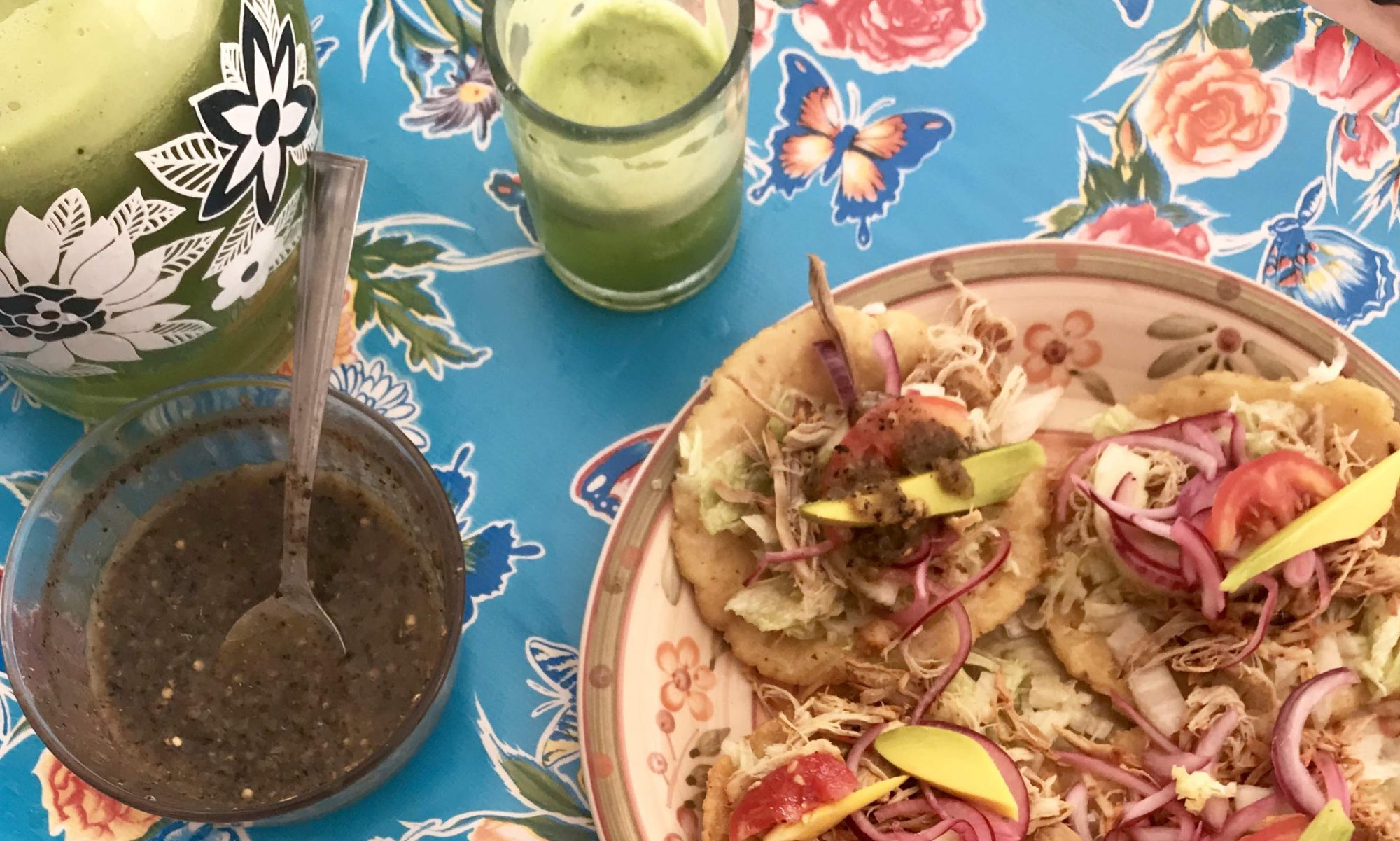
A shared dish of fish roe cooked Veracruz style with tomatoes, onions, herbs, & capers. Veracruz, 2007

Lindsay's Tips : Mamasota Vintage for the love of Mexico
Vintage Merchant & Mexico Lover
Notes on my mexican food obsession including but not limited to: farming, eating local, native food culture, street food tour, market cooking, mexican food history, exploring food of the yucatan, using the best mexican ingredients, food shopping in a mexican village, eating in the pueblo, taco, tamale, antojito , salsa, chile, adventures in beachside eating, mexican foodies, traditional candy, and all.

A shared dish of fish roe cooked Veracruz style with tomatoes, onions, herbs, & capers. Veracruz, 2007






The best place to eat in El Panchan is a little fonda tucked behind Don Mucho’s- follow the signs for the reception for Jungle Palace and follow the laughter to Doña Felipa’s kitchen. Ask what’s available, “Que hay para comer?”
I highly recommend her enormous handmade quesadillas, possibly with grilled bistec and a generous helping of her special salsa de ajonjoli. If she has (cactus paddles), go for it because she slices them extra thin & they are delicious! Her menu is typical of regional eateries: eggs, chicken, chorizo, pork & grilled beef offered as tacos, quesadillas, or al gusto (entree prepared as you like, ie ala mexicana, frito, served with rice & beans, tortillas & salsa…
Breakfasts are $55 pesos and include local coffee, made in the cafe de olla style, but without sugar. We had huevos con nopales and huevos ala mexicana several times. I have to say that coffee has improved leaps & bounds over the last decade in Chiapas. So happy to see the gorgeous coffee grown in the area consumed locally! It used to be so much Nescafe!
Ooh! This is also a great place to drink beer! Caguamas are $45 pesos. Ask for glasses & share with friends.


Doña Felipa is from Oaxaca. She married a Palenque local and lives on a ranch outside of town. All of the food waste is transported to her ranch to feed the chickens, turkeys & pigs. She’s super knowledgeable about agriculture & food traditions of the area. I love how she touches every table, even while her grandchildren were visiting. This is the kind of warm hospitality that makes eating memorable, and is not so often found in the wilds of the jungle.
When I was working at Mexican restaurants in NYC, I always assumed one’s *cilantro allergy* was a desire of keeping cilantro from getting stuck in one’s teeth.
Are you regularly cooking for loved ones who hate cilantro? Use a combination of other fresh herbs. Over time, you may be able to conquer the aversion.
Source: How to manage — or even conquer! — your cilantro hatred – The Washington Post

Lonchería de 3 Compadres in Chicxulub Puerto
Adjusting to living in a pueblito, things aren’t what they seem! In the Yucatan, villages can appear abandoned during the heat of the day. Businesses may appear rundown. Stores look empty. It might take you some time to get into the local groove. Asking locals for their recommendations is your best bet. Don’t bother with google maps.
For example, Chicxulub Puerto, a fishing village on the coast of about 13,000 residents spread along a barrier island between the Gulf Coast & a brackish swamp, is full of vacation homes and business that only open during the high seasons.
I found the local market on my first day and ate a a couple of the loncherías in the plaza. In this part of the world, these eateries stick to masa based antojitos: panuchos, salbutes, and empanadas. They may also we offer soup & tortas. I tried maybe 3 of the morning places and they were all kind eh. Greasy masa, canned tomato sauce, canned beans, sloppy salsas, dirty tables…no gracias! Better to enjoy the local bounty of my own kitchen.
One Sunday, I asked the plant vendor where was good to eat. He gestured to Los Tres Comadres, “Alli se come rico.”
Dios Mío! The ladies running this kitchen take pride in their antojitos. One was grating cabbage for the ensalada de repollo, occasionally stirring the tomato sauce on the stovetop. The other managed the masa & the frying pan. Another handled orders & payment, also running hot panuchos, salbutes & empanadas to the outdoor tables. I
The masa, or tortilla dough, for my antojitos was tender & light, not greasy-even through it had just been removed from bubbling oil. Both the relleno negro atop my salbute & the ground pork filling of the empanada were complex & flavorful. The traditional accompaniments were bright & fresh, totally complementing the fried masa with ensalada de repollo, made from grated cabbage, grated tomato, and tiny slivers of red onion dressed in lime juice; a mild roasted tomato sauce; and a gorgeously picante roasted habanero salsa.

Around Merida & the Yucatán coast, cantinas are mandatory stops in the afternoon when the heat get to be too much! Cold beers, served as cheladas or in cubetas, accompany small plates (don’t drink on an empty stomach!) If you are lucky, you can choose your soundtrack with a rockola or video jukebox, or if you are luckier, classic cumbias will play from the kitchen where cooks will dance as they prepare your botanas.
Botanas aka mexican apertivos:

Cantinas in Merida & the Yucatan coast offer healthier fare than found in Mexico City. Typical botanas are cooked potato or beets dressed with salt, cilantro & fresh lime juice, Sikil P’aak- a tomato & pumpkin seed purée, scrambled egg & chaya leaf, squash fried in lard, potatoes fried in a suggestion of chorizo, a paste of refried black beans, a stuffed cabbage leaf…And always hot dog salad: sliced hotdogs served cold in a dressing of ketchup, mustard or mayonnaise with onion or jalapeno.

